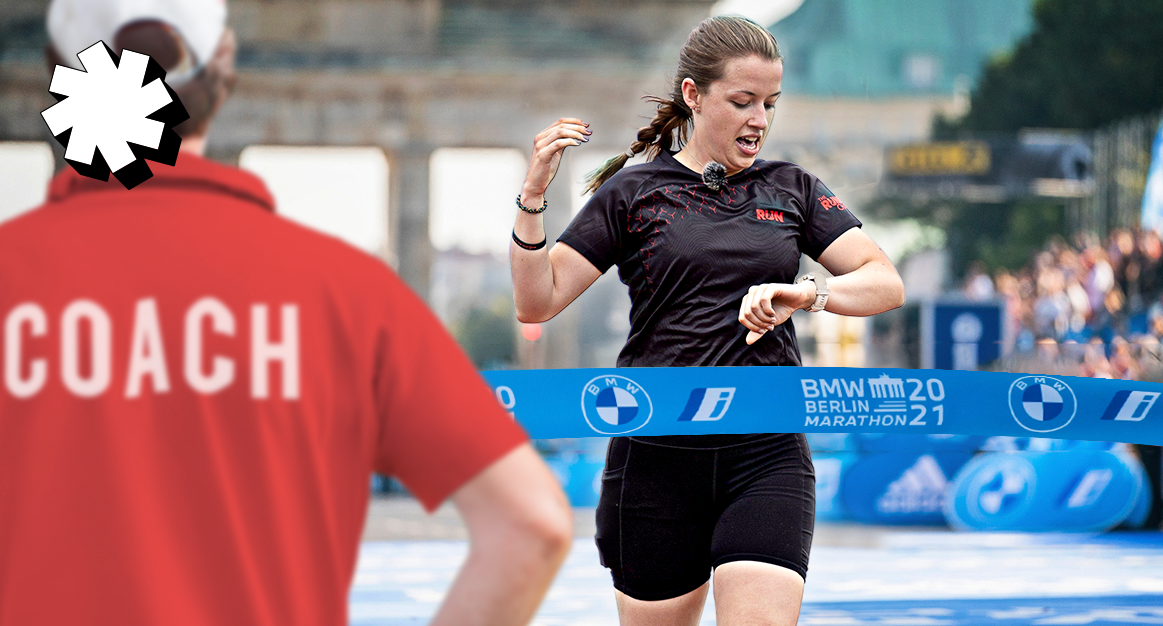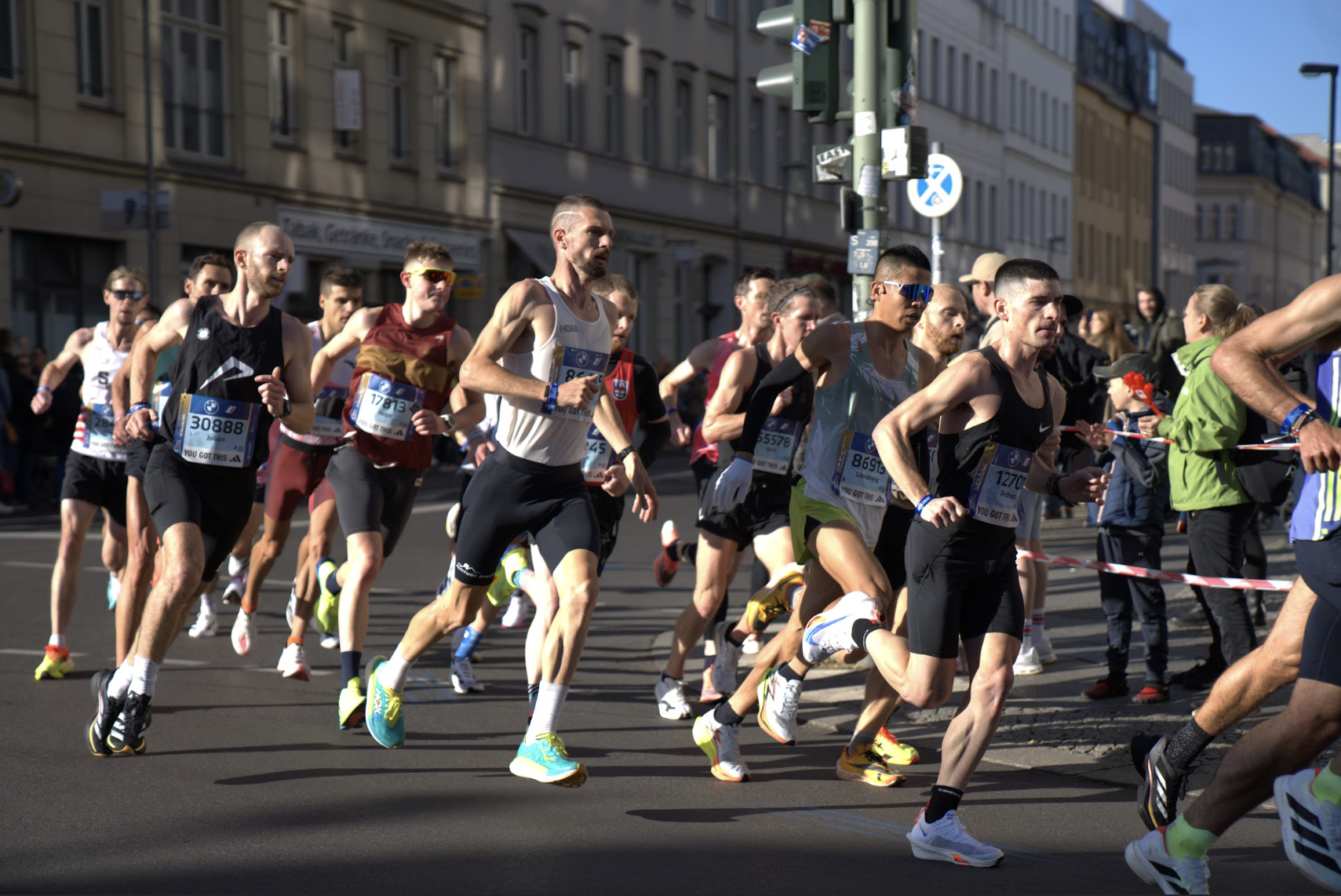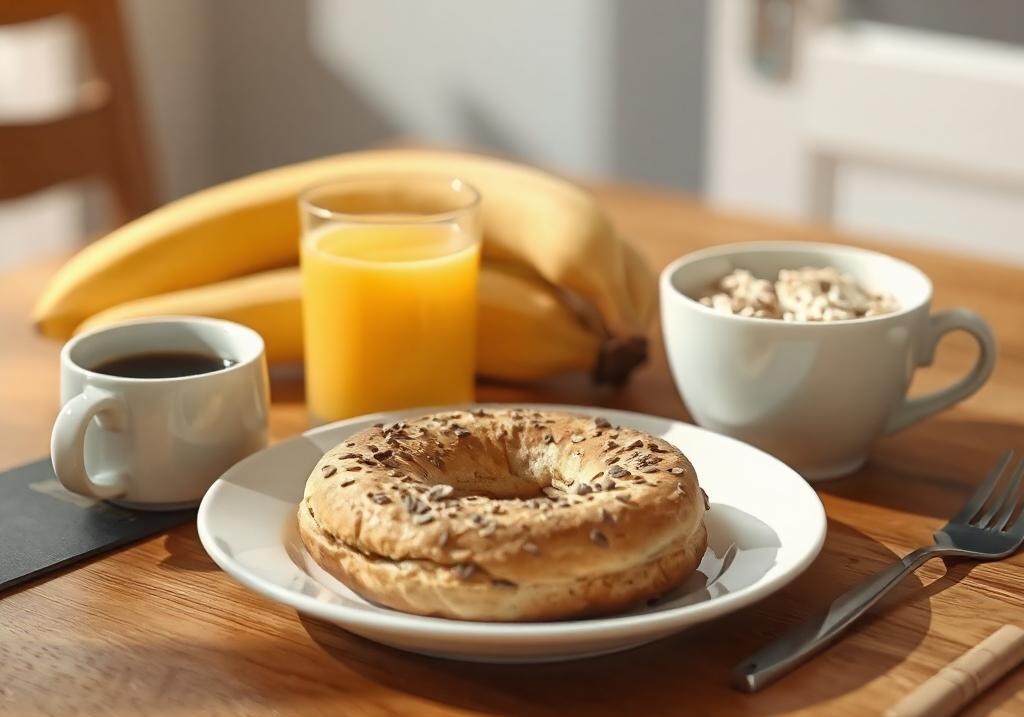How Do You Run Faster?

Do you want to run faster? Whatever distance you’re training for, we’ve got some top tips on the best ways to become a faster runner.
RUN SLOWER TO GET FASTER!
One of the best ways to run faster is to slow down!
Of course, you can’t expect to run faster by only running slow, but by gradually increasing the amount of slow easy runs that you do, you can build up your overall training volume which allows you to increase the amount of faster running you can do.
First of all, easy runs are important because they are the foundation of all our training and they build up our general fitness, plus running slowly can help us to recover after running faster workouts.
When we’re thinking about faster running, we’re also thinking about the 80/20 rule, meaning 80% of our weekly running is slow and 20% is faster. If you run 30km a week, that means 6km of faster running, but if you run a total of 80km a week, that’s 16km of faster running. The 80/20 rule is harder to apply for lower overall weekly mileage, and the science isn’t exact, but you get the idea: to be able to tolerate more fast running, you have to do more slow running.
But be careful because you can’t just jump to running much further each week, and it’s good advice to increase volume by around 10% each week.
RUN STRIDES (AND HILL SPRINTS!)
Strides are short, fast accelerations. To run a stride, quickly accelerate from a jog until you’re running at about 90-95% of your maximum speed, then hold that for around 10 seconds, then slow down again to a walk.
Adding a few strides to the end of your easy runs can help to improve your form because by running fast you naturally stand up taller, move your arms and legs in the most efficient way, get up on your toes, and increase your cadence – and they are all benefits which transfer to your slower running.
Hill sprints work in a similar way and have the same great benefits
ADD DRILLS TO YOUR WARM UP
Running drills activate your muscles and help improve your form, while also taking you through the running motions as part of a warm up. Being consistent with drills can naturally ‘drill’ good form into the way you run.
Here’s Andy talking Sarah through some of the best running drills.
WORK ON YOUR FORM
Doing drills and adding strides and hill sprints will significantly help your running form, and having really good form is going to help you run faster.
Good form means running tall, with your feet landing beneath your body, at a cadence of around 170-190.
A good way to think about great running form is to imagine some string coming out the top of your head and it’s pulling you upright. Always try to stay tall, because if the string (and your body) goes slack then you lose your form and running feels much harder.
Just try it next time you run: go from being tall and upright to running with your head and shoulders slumped forward, and suddenly it’s so much harder to run fast.
Having good form is especially helpful late in a race when you get tired – so if you want to run a fast race, you need to keep good form until the finish line.
DO SOME STRENGTH TRAINING
Speed comes from the power in your body. More strength means more power, plus more strength can make us more resilient to injuries as we increase our training volume.
Get in the gym, or get some weights at home, and work on strengthening the main running muscles, including the glutes, hamstrings, quads, calves and core. It’s great if you can do at least one strength session per week.
DO ONE OR TWO SPEED SESSIONS PER WEEK
As well as your easy runs, you want to add in intervals, tempos or threshold runs to your training, and this is really where you can start to run faster.
Intervals are typically short and fast, tempos are long and steady runs, and threshold runs are somewhere in the middle, but they are all run at paces faster than your easy runs.
By adding in these sessions, we start to get more variety into our training, and we challenge our bodies in different ways. We become more efficient at using oxygen which can improve our VO2 Max, and we get better at clearing lactate from our muscles (that’s the burning feeling which will slow you down), plus we generally build up more strength and speed endurance by adding in these intervals.
It’s best to work with a coach or coaching app to help you through speed work if you haven’t done them before. It’s important to find the right balance and not try to do too much, or run too fast, plus always have a rest day or easy day after a faster session to help your recovery.
BE PATIENT
There are no shortcuts to getting faster. Small incremental improvements can make big differences over the course of a 12-to-16 week training block. If that training leads to you being able to comfortably run just one second faster per kilometre each week, then that might not sound like much, but it could mean running a marathon 10 minutes quicker overall.
Don’t try to push too hard and run too fast, too soon. Doing this can put too much strain through your body which can lead to niggles and injuries, which will ultimately slow you down.
GET COMFORTABLE AT RACE PACE (AKA GET SPECIFIC)
If you’ve got a goal time for a race then it’s good to practise running at that pace – and also running a bit faster.
Your training will generally build up with easy runs and faster sessions, but you also want to get specific with your training. So if you’re trying to get a fast track 5,000m time, then run on the track and do lots of laps at your goal pace, gradually increasing the number of fast laps you string together.
Or if you want to run a 50-minute 10km, that’s 5:00 per km or 8:00 per mile. During your training, you want to gradually do more distance at that pace. To begin, that might be 8 x 400m at goal pace, but a few weeks later it could be 5 x 1km, then 4 x 2km, and it means that by race day you’ll be confident in your ability to run the time you want.
And alongside the race pace work, add in some intervals which are faster. There’s no need to sprint as fast as possible, and start by aiming for short reps which are 10-15 seconds per kilometre or 5-10 seconds per mile faster than race pace.
PRIORITISE RECOVERY AFTER RUNS (AND MANAGE NIGGLES)
The only way to really improve as a runner is to be able to run consistently and make gradual improvements. By struggling with niggles or injuries, or not recovering optimally after runs, we can set back our training and slow down our progress.
Manage niggles or injuries when they occur. Try to work on your recovery by being well hydrated, well fuelled and prioritise sleep (plus things like stretching and foam rolling if you like doing that). Add in extra rest days, easy days or cross-training days if you feel like the volume is challenging, or if you’re feeling extra life stress and need to go easy on yourself.
These things will all help to make sure that you are ready to take on your next day of training.
MEASURE YOUR PROGRESS WITH BENCHMARK WORKOUTS OR TESTS
How do you know if you’ve actually got quicker? At the beginning of a training block you could try a benchmark time trial and then repeat it near the end of your training. That could be a one mile time trial, a fast 5km, or something similar.
Use this to measure your improvement, but also reflect on what training methods worked best for you. Did you feel a good benefit from strength training? Were threshold runs best for you? Did hill sprints make all the difference? Knowing what worked will help towards your next training block.
***
Have you got any tips which have helped you to become a faster runner?



























Running News
Ingebrigtsen Stars at World Athletics Indoor Championships 2025 – Plus All The Winners!
Sam Ruthe Is First 15-Year-Old To Run A Four-Minute Mile!
Eliud Kipchoge Will Run The 2025 Sydney Marathon!